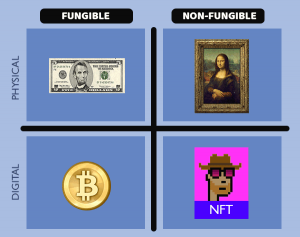Difference between revisions of "NFT Art"
(→History) |
|||
| Line 4: | Line 4: | ||
== History == | == History == | ||
Global art sales generate anywhere from 60 to 70 billion dollars per year.<ref name="CNN" | Global art sales generate anywhere from 60 to 70 billion dollars per year.<ref name="CNN" | ||
| − | >Steven, Murphy. [https://www.cnn.com/style/article/how-do-art-auctions-work-steven-murphy/index.html "Art explained: How do art auctions really work?"] (2018, August 30). ''CNN''. Retrieved March 11, 2021.</ref> From this pool, 20% of the sales come from auctions.<ref name="CNN"/> Art gets into the market when a collector or institution decides that they want to put their piece up. Then auction houses can work with the seller to host events to auction their piece. The top three auction companies are Sotheby’s, Christie’s, and Phillips.<ref> Thierry, Ehrmann[https://www.artprice.com/artprice-reports/the-contemporary-art-market-report-2019/the-best-auction-houses "The best auction houses"]. ''The Globe and Mail''. Retrieved April 28, 2019.<ref name="CNN"/> | + | >Steven, Murphy. [https://www.cnn.com/style/article/how-do-art-auctions-work-steven-murphy/index.html "Art explained: How do art auctions really work?"] (2018, August 30). ''CNN''. Retrieved March 11, 2021.</ref> From this pool, 20% of the sales come from auctions.<ref name="CNN"/> Art gets into the market when a collector or institution decides that they want to put their piece up. Then auction houses can work with the seller to host events to auction their piece. The top three auction companies are Sotheby’s, Christie’s, and Phillips.<ref> Thierry, Ehrmann[https://www.artprice.com/artprice-reports/the-contemporary-art-market-report-2019/the-best-auction-houses "The best auction houses"]. ''The Globe and Mail''. Retrieved April 28, 2019.Companies like these then have a team of specialists who speculates the authenticity and price of the piece to be sold. <ref name="CNN"/> |
== Market Place == | == Market Place == | ||
Revision as of 09:04, 12 March 2021
NFT stands for Non-fungible Token, which essentially means that you have a unique token the is indistinguishable from all other tokens.[1] For instance, the US dollar is fungible, meaning that all 20 dollar bills are the same, they are worth the same, you can trade one for another equally. NFT tokens can be issued for digital artwork. At a high-level you can crate some digital art then issue an NFT for it, now someone can buy your art, and it is non-fungible, it is purely unique there is only one of its kind. In short, NFT’s have transformed the way artists are creating art and how collectors are buying art.
History
Global art sales generate anywhere from 60 to 70 billion dollars per year.[2] From this pool, 20% of the sales come from auctions.[2] Art gets into the market when a collector or institution decides that they want to put their piece up. Then auction houses can work with the seller to host events to auction their piece. The top three auction companies are Sotheby’s, Christie’s, and Phillips.Cite error: Closing </ref> missing for <ref> tag
Artists do not have to go through auction houses anymore to sell their artwork. As they could potentially be rejected, as auction houses like Christie’s do not have to accept your art. Also, artists can have the power to set the price of their art, not have it set by auction houses. Crists’ notes on their website that “Christie’s specialist will contact you to discuss estimates.” The specialist determines the value of your work, not you.
References
- ↑ Mitchell, Clark. "NFTs, explained" (2021, March 11). The VergeRetrieved March 12, 2021.
- ↑ 2.0 2.1 Steven, Murphy. "Art explained: How do art auctions really work?" (2018, August 30). CNN. Retrieved March 11, 2021.
